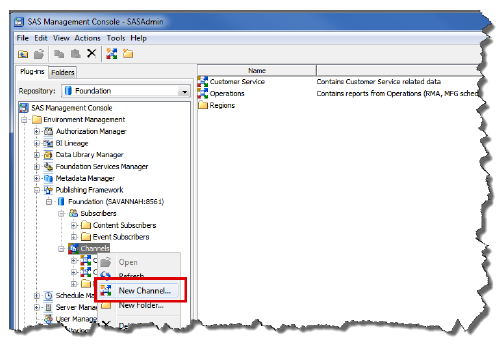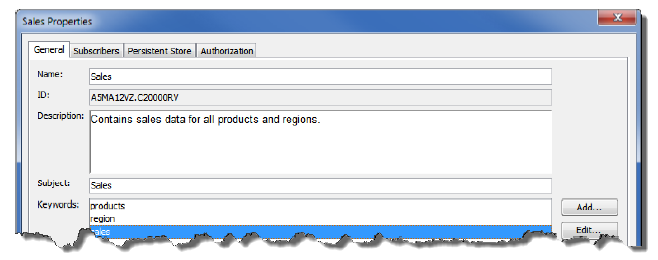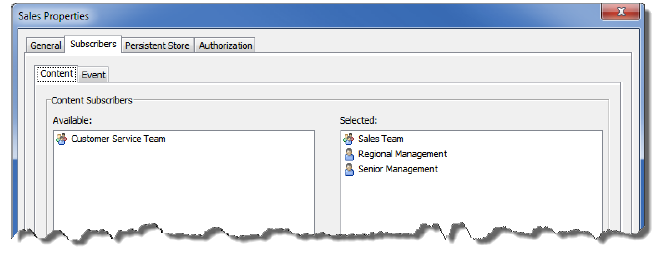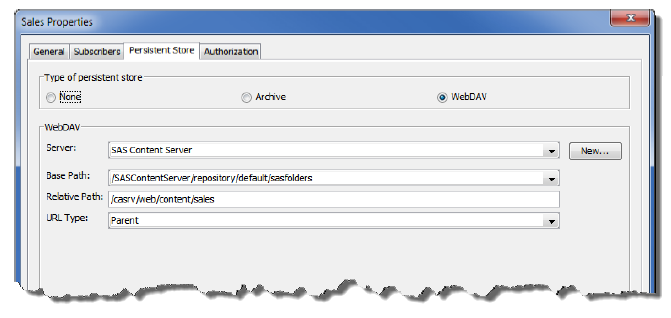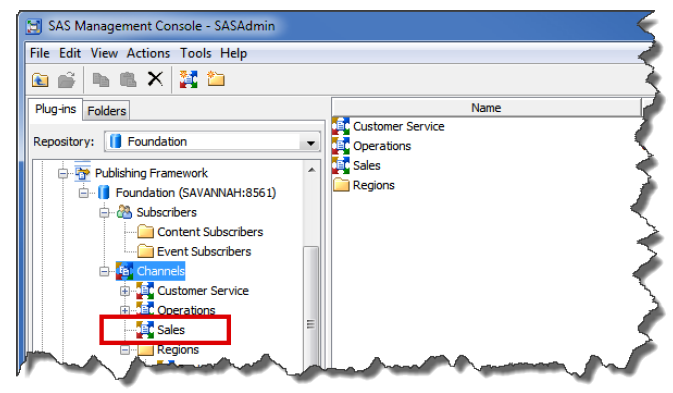You can create SAS publication channels based on topics (3rd Quarter Results), organization (Business Unit X), user audience (new product release), or any other category. Once defined, authorized users can
subscribe to the channels and automatically receive information whenever it is published.
Note: To publish to a channel, the publisher must have Write permission to the channel. You can modify an existing channel to change the permissions for a user through the Authorization tab.
Note: To add channels or subscribers, the WriteMemberMetadata permission is required on the relevant parent folder.
This following example shows how to create a Sales channel to distribute sales results for each product and each region. This channel distributes information to the sales organization, regional management teams, and others in the management team.
- Open SAS Management Console. On the Plug-ins tab, navigate to the Environment Management>Publishing Framework area.
- Right-click Channels and select New Channel from the pop-up menu, as shown in the following figure:
- In the next window, provide the channel name and other information that helps the users understand the contents or find it in a search.
- Click the Subscribers tab. There are two tabs in this window: Content and Event. There are two types of subscribers to these channels.Add the subscribers to the desired method. In this example, the subscribers are added to the Content tab so they receive the information when a new package is available.
- When information is published, it should be retained. The following example uses a WebDAV location to store content. WebDAV is a file folder-structured location accessible from the web that maintains file- and folder-level security.
- The next window shows the results and allows you to make changes. Click Finish to establish the channel. In the following figure, you can see the Sales channel is now available.
This article is an excerpt from Tricia Aanderud and Angela Hall's SAS Press publication:
Building Business Intelligence Using SAS: Content Development Examples.
